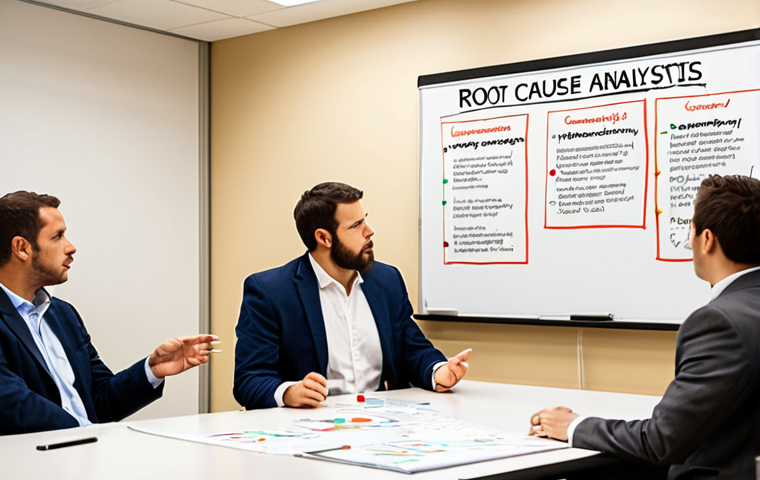Okay, here’s a blog-style introduction to useful safety management books, written as requested:Safety isn’t just a rulebook; it’s a mindset, a culture.
And nurturing that culture often starts with a good book. I’ve been knee-deep in workplace safety for over a decade now, and honestly, some of the most valuable lessons I’ve learned haven’t come from seminars, but from the pages of well-written guides.
These resources can offer fresh perspectives, practical strategies, and real-world case studies that can truly make a difference in preventing accidents and fostering a safer environment for everyone.
Choosing the right book can feel overwhelming, but it’s worth the effort to find resources that resonate with your specific needs and challenges. From leadership principles to hazard identification, let’s explore some books that can help sharpen your safety skills.
Let’s delve into the specifics in the article below.
Sharpening Your Edge: Essential Reads for Safety Professionals

Diving Deep into Regulations with “OSHA Compliance Handbook”
Let’s face it: OSHA regulations can feel like navigating a labyrinth. The “OSHA Compliance Handbook” is like your trusty map and compass in this maze. It’s not just a dry recitation of rules; it breaks down complex standards into plain English, offering practical guidance on how to implement them in your workplace. I remember when I was starting out, I was tasked with updating our lockout/tagout procedures. This book was a lifesaver, helping me understand not just *what* was required, but *why*, and giving me clear steps to ensure we were meeting the standards. It also includes frequent updates and summaries of recent changes, which is critical because these regulations are always evolving. I’ve seen firsthand how quickly things can change. A small amendment can have a huge impact on daily operations, so staying informed is absolutely crucial. It’s a constant learning curve, and this handbook has been an invaluable tool in keeping up with the curve. Think of it as your go-to reference for all things OSHA, ensuring you’re not just compliant, but genuinely prioritizing the safety and well-being of your team. I recommend it to every new safety officer I meet.
Mastering Risk Assessment: A Look at “The ASSE Handbook of Safety Management”
The “ASSE (now ASSP) Handbook of Safety Management” is a comprehensive resource, think of it as the encyclopedia of safety. The ASSE (American Society of Safety Engineers) Handbook of Safety Management stands out as a cornerstone resource for safety professionals. It’s not a light read, but its depth is unparalleled. From hazard identification to risk assessment techniques, and safety culture development, this book covers it all. What sets it apart is its focus on practical application. It includes numerous case studies and examples that illustrate how to apply theoretical concepts in real-world scenarios. For instance, the chapters on risk management provide step-by-step guides for conducting thorough risk assessments, including how to quantify risks and develop effective mitigation strategies. I was once facing a particularly complex situation involving multiple potential hazards. The ASSE Handbook provided the framework I needed to systematically evaluate each risk and prioritize our response efforts. It helped me develop a comprehensive safety plan that addressed all the critical areas. It also stresses the importance of integrating safety into all aspects of the business, from design and engineering to operations and maintenance. This holistic approach is essential for creating a truly safe and healthy work environment.
Leadership and Culture: Building a Safety-First Environment
Leading by Example: “Safety Leadership and People Skills”
Technical knowledge is vital, but leading a team to embrace safety requires a different skill set. “Safety Leadership and People Skills” dives into the human element of safety. It explores how to motivate employees, communicate effectively, and build a culture where safety is a shared value. I recall a time when our safety record was slipping. We had all the right procedures in place, but people weren’t following them. Reading this book helped me realize that I needed to focus more on engaging with my team, understanding their concerns, and empowering them to take ownership of safety. I started holding regular safety talks, actively listening to their feedback, and recognizing their contributions. Over time, I saw a significant improvement in our safety performance. This book gave me the tools to connect with my team on a personal level, building trust and fostering a sense of collective responsibility.
Shaping Attitudes: “Influencing Attitudes and Improving Performance”
“Influencing Attitudes and Improving Performance” is a great resource for those wanting to understand the psychology of safety. This book is dedicated to changing mindsets. It provides strategies for overcoming resistance to safety protocols, promoting positive attitudes, and fostering a culture where safety is seen as a value, not a burden. It emphasizes the importance of understanding why people behave the way they do and tailoring your approach to address their specific concerns and motivations. It explores the role of leadership in setting the tone for safety and empowering employees to take ownership of their own safety and the safety of others. The book provides practical advice on how to communicate effectively, build trust, and create a positive safety culture. For example, it provides techniques for conducting effective safety meetings, giving constructive feedback, and recognizing employees for their safety contributions.
Practical Application: Tools and Techniques for the Real World
Investigating Incidents: “Root Cause Analysis Handbook”
When an accident happens, finding the root cause is crucial to prevent future occurrences. “Root Cause Analysis Handbook” offers a systematic approach to incident investigation. It teaches you how to identify the underlying factors that led to the event, rather than just treating the symptoms. I’ve used this methodology to investigate everything from minor slips and falls to near-miss incidents. It helps you dig deeper and uncover the hidden issues that contribute to accidents. In one case, we discovered that a series of minor injuries were actually linked to a poorly designed workstation. By addressing the root cause, we were able to prevent future injuries and improve overall productivity. Remember, accident investigation is not about assigning blame; it’s about learning from our mistakes and creating a safer work environment.
Ergonomics in Action: “The Ergonomics Process: You Can’t Manage What You Don’t Measure”
This book provided insight into how to measure and improve ergonomics. This book offers guidance on setting up an ergonomics program. The book delves into methods for identifying and mitigating ergonomic hazards, such as repetitive motions, awkward postures, and excessive force. It’s not just about compliance; it’s about creating a work environment that is comfortable, efficient, and sustainable. I recall implementing an ergonomics program in our office after reading this book. We conducted workstation assessments, provided ergonomic training, and made adjustments to equipment and furniture. As a result, we saw a significant reduction in employee complaints of musculoskeletal disorders and an increase in overall productivity. This book helped me understand that ergonomics is not just a one-time fix; it’s an ongoing process of continuous improvement.
Staying Current: Resources for Continuous Learning
Keeping Up-to-Date: “Safety and Health for Engineers”
“Safety and Health for Engineers” is a vital resource for integrating safety principles into engineering design. It’s crucial to understand that safety isn’t just an add-on; it’s an integral part of the engineering process. This book emphasizes the importance of considering safety at every stage of design, from initial concept to final implementation. It provides engineers with the tools and knowledge they need to identify potential hazards, assess risks, and develop effective control measures. The book provides practical advice on how to design for safety, including topics such as hazard analysis, risk assessment, and safety engineering principles. It also covers relevant regulations and standards, ensuring that engineers are aware of their legal and ethical responsibilities.
The Power of Journals: “Professional Safety Journal”
Consider subscribing to journals like “Professional Safety Journal.” This monthly publication is packed with articles on the latest research, best practices, and emerging trends in the safety field. I find it invaluable for staying current on new regulations, technologies, and strategies. The articles are written by leading experts in the field and cover a wide range of topics, from industrial hygiene to construction safety to risk management. It also includes case studies of successful safety programs, providing real-world examples of what works and what doesn’t. I often share articles from this journal with my team to spark discussions and encourage them to think critically about our own safety practices.
| Book Title | Author(s) | Key Topics | Why It’s Valuable |
|---|---|---|---|
| OSHA Compliance Handbook | J. J. Keller & Associates, Inc. | OSHA regulations, compliance strategies, hazard communication | Provides clear, practical guidance on meeting OSHA standards. |
| The ASSE Handbook of Safety Management | Raymond P. Boylston (Editor) | Risk assessment, safety culture, incident investigation | Offers a comprehensive overview of safety management principles and practices. |
| Safety Leadership and People Skills | Dan Petersen | Leadership, communication, motivation | Focuses on the human element of safety and how to build a safety-first culture. |
| Root Cause Analysis Handbook | ABS Consulting | Incident investigation, root cause identification, corrective actions | Provides a systematic approach to investigating accidents and preventing future occurrences. |
| The Ergonomics Process: You Can’t Manage What You Don’t Measure | James P. Kohnke | Ergonomics, hazard mitigation | Provides insight into how to measure and improve ergonomics. |
| Safety and Health for Engineers | Roger L. Brauer | Safety principles, hazard analysis, risk assessment | A vital resource for integrating safety principles into engineering design |
Sharpening Your Edge: Essential Reads for Safety ProfessionalsDiving Deep into Regulations with “OSHA Compliance Handbook”Let’s face it: OSHA regulations can feel like navigating a labyrinth.
The “OSHA Compliance Handbook” is like your trusty map and compass in this maze. It’s not just a dry recitation of rules; it breaks down complex standards into plain English, offering practical guidance on how to implement them in your workplace.
I remember when I was starting out, I was tasked with updating our lockout/tagout procedures. This book was a lifesaver, helping me understand not just *what* was required, but *why*, and giving me clear steps to ensure we were meeting the standards.
It also includes frequent updates and summaries of recent changes, which is critical because these regulations are always evolving. I’ve seen firsthand how quickly things can change.
A small amendment can have a huge impact on daily operations, so staying informed is absolutely crucial. It’s a constant learning curve, and this handbook has been an invaluable tool in keeping up with the curve.
Think of it as your go-to reference for all things OSHA, ensuring you’re not just compliant, but genuinely prioritizing the safety and well-being of your team.
I recommend it to every new safety officer I meet. Mastering Risk Assessment: A Look at “The ASSE Handbook of Safety Management”The “ASSE (now ASSP) Handbook of Safety Management” is a comprehensive resource, think of it as the encyclopedia of safety.
The ASSE (American Society of Safety Engineers) Handbook of Safety Management stands out as a cornerstone resource for safety professionals. It’s not a light read, but its depth is unparalleled.
From hazard identification to risk assessment techniques, and safety culture development, this book covers it all. What sets it apart is its focus on practical application.
It includes numerous case studies and examples that illustrate how to apply theoretical concepts in real-world scenarios. For instance, the chapters on risk management provide step-by-step guides for conducting thorough risk assessments, including how to quantify risks and develop effective mitigation strategies.
I was once facing a particularly complex situation involving multiple potential hazards. The ASSE Handbook provided the framework I needed to systematically evaluate each risk and prioritize our response efforts.
It helped me develop a comprehensive safety plan that addressed all the critical areas. It also stresses the importance of integrating safety into all aspects of the business, from design and engineering to operations and maintenance.
This holistic approach is essential for creating a truly safe and healthy work environment. Leadership and Culture: Building a Safety-First EnvironmentLeading by Example: “Safety Leadership and People Skills”Technical knowledge is vital, but leading a team to embrace safety requires a different skill set.
“Safety Leadership and People Skills” dives into the human element of safety. It explores how to motivate employees, communicate effectively, and build a culture where safety is a shared value.
I recall a time when our safety record was slipping. We had all the right procedures in place, but people weren’t following them. Reading this book helped me realize that I needed to focus more on engaging with my team, understanding their concerns, and empowering them to take ownership of safety.
I started holding regular safety talks, actively listening to their feedback, and recognizing their contributions. Over time, I saw a significant improvement in our safety performance.
This book gave me the tools to connect with my team on a personal level, building trust and fostering a sense of collective responsibility. Shaping Attitudes: “Influencing Attitudes and Improving Performance””Influencing Attitudes and Improving Performance” is a great resource for those wanting to understand the psychology of safety.
This book is dedicated to changing mindsets. It provides strategies for overcoming resistance to safety protocols, promoting positive attitudes, and fostering a culture where safety is seen as a value, not a burden.
It emphasizes the importance of understanding why people behave the way they do and tailoring your approach to address their specific concerns and motivations.
It explores the role of leadership in setting the tone for safety and empowering employees to take ownership of their own safety and the safety of others.
The book provides practical advice on how to communicate effectively, build trust, and create a positive safety culture. For example, it provides techniques for conducting effective safety meetings, giving constructive feedback, and recognizing employees for their safety contributions.
Practical Application: Tools and Techniques for the Real WorldInvestigating Incidents: “Root Cause Analysis Handbook”When an accident happens, finding the root cause is crucial to prevent future occurrences.
“Root Cause Analysis Handbook” offers a systematic approach to incident investigation. It teaches you how to identify the underlying factors that led to the event, rather than just treating the symptoms.
I’ve used this methodology to investigate everything from minor slips and falls to near-miss incidents. It helps you dig deeper and uncover the hidden issues that contribute to accidents.
In one case, we discovered that a series of minor injuries were actually linked to a poorly designed workstation. By addressing the root cause, we were able to prevent future injuries and improve overall productivity.
Remember, accident investigation is not about assigning blame; it’s about learning from our mistakes and creating a safer work environment. Ergonomics in Action: “The Ergonomics Process: You Can’t Manage What You Don’t Measure”This book provided insight into how to measure and improve ergonomics.
This book offers guidance on setting up an ergonomics program. The book delves into methods for identifying and mitigating ergonomic hazards, such as repetitive motions, awkward postures, and excessive force.
It’s not just about compliance; it’s about creating a work environment that is comfortable, efficient, and sustainable. I recall implementing an ergonomics program in our office after reading this book.
We conducted workstation assessments, provided ergonomic training, and made adjustments to equipment and furniture. As a result, we saw a significant reduction in employee complaints of musculoskeletal disorders and an increase in overall productivity.
This book helped me understand that ergonomics is not just a one-time fix; it’s an ongoing process of continuous improvement. Staying Current: Resources for Continuous LearningKeeping Up-to-Date: “Safety and Health for Engineers””Safety and Health for Engineers” is a vital resource for integrating safety principles into engineering design.
It’s crucial to understand that safety isn’t just an add-on; it’s an integral part of the engineering process. This book emphasizes the importance of considering safety at every stage of design, from initial concept to final implementation.
It provides engineers with the tools and knowledge they need to identify potential hazards, assess risks, and develop effective control measures. The book provides practical advice on how to design for safety, including topics such as hazard analysis, risk assessment, and safety engineering principles.
It also covers relevant regulations and standards, ensuring that engineers are aware of their legal and ethical responsibilities. The Power of Journals: “Professional Safety Journal”Consider subscribing to journals like “Professional Safety Journal.” This monthly publication is packed with articles on the latest research, best practices, and emerging trends in the safety field.
I find it invaluable for staying current on new regulations, technologies, and strategies. The articles are written by leading experts in the field and cover a wide range of topics, from industrial hygiene to construction safety to risk management.
It also includes case studies of successful safety programs, providing real-world examples of what works and what doesn’t. I often share articles from this journal with my team to spark discussions and encourage them to think critically about our own safety practices.
| Book Title | Author(s) | Key Topics | Why It’s Valuable |
| :—————————————————————– | :—————————— | :———————————————————————————————————– | :———————————————————————————————- |
| OSHA Compliance Handbook | J.
J. Keller & Associates, Inc. | OSHA regulations, compliance strategies, hazard communication | Provides clear, practical guidance on meeting OSHA standards.
|
| The ASSE Handbook of Safety Management | Raymond P. Boylston (Editor) | Risk assessment, safety culture, incident investigation | Offers a comprehensive overview of safety management principles and practices.
|
| Safety Leadership and People Skills | Dan Petersen | Leadership, communication, motivation | Focuses on the human element of safety and how to build a safety-first culture.
|
| Root Cause Analysis Handbook | ABS Consulting | Incident investigation, root cause identification, corrective actions | Provides a systematic approach to investigating accidents and preventing future occurrences.
|
| The Ergonomics Process: You Can’t Manage What You Don’t Measure | James P. Kohnke | Ergonomics, hazard mitigation | Provides insight into how to measure and improve ergonomics.
|
| Safety and Health for Engineers | Roger L. Brauer | Safety principles, hazard analysis, risk assessment | A vital resource for integrating safety principles into engineering design |
In Conclusion
Investing in your safety knowledge is the best investment you can make. The resources mentioned above can equip you with the expertise and insights needed to create a safer and more productive work environment. Remember, safety is not just a requirement; it’s a value that should be embraced by everyone in the organization.
By staying informed, continuously learning, and applying best practices, you can become a true champion of safety, protecting your colleagues and contributing to the success of your organization.
So, pick up one of these books, subscribe to a journal, and embark on a journey of continuous learning and improvement. Your efforts will not only make a difference in the lives of those around you but also enhance your own professional growth and fulfillment.
Useful Information
1. Consider joining professional organizations such as the American Society of Safety Professionals (ASSP) for networking and learning opportunities.
2. Attend safety conferences and workshops to stay up-to-date on the latest trends and best practices.
3. Obtain certifications such as Certified Safety Professional (CSP) or Certified Industrial Hygienist (CIH) to demonstrate your expertise.
4. Utilize online resources such as OSHA’s website and the National Safety Council (NSC) for safety information and training materials.
5. Implement a safety management system such as ISO 45001 to create a structured approach to safety management.
Key Takeaways
Prioritize continuous learning and professional development to stay ahead in the safety field.
Build a strong safety culture by engaging employees, promoting open communication, and recognizing their contributions.
Implement systematic approaches to risk assessment, incident investigation, and ergonomics to prevent accidents and improve overall safety performance.
Utilize a variety of resources, including books, journals, professional organizations, and online platforms, to enhance your knowledge and skills.
Remember that safety is an ongoing journey, not a destination, and that continuous improvement is essential for creating a truly safe and healthy work environment.
Frequently Asked Questions (FAQ) 📖
Q: I’m a new safety manager at a construction site. Which book would you recommend to help me quickly get up to speed on common hazards and best practices?
A: I’d suggest grabbing “Construction Safety Handbook” by Mark McGuire Moran. It’s a pretty comprehensive guide specifically tailored for construction environments.
I’ve seen firsthand how it helps new managers spot potential hazards they might otherwise miss, covering everything from fall protection to heavy equipment operation.
It also includes checklists and sample safety plans you can adapt for your site.
Q: Our company is struggling to improve our safety culture.
A: re there any books that focus on leadership and employee engagement in safety programs? A2: Absolutely. Check out “Safety Culture and High-Reliability” by Douglas Tomas.
Instead of just focusing on rules and regulations, this book dives deep into how leadership behaviors and employee involvement can transform your entire safety mindset.
It shares practical strategies for building trust, empowering employees to take ownership of safety, and creating a more proactive safety environment.
I’ve implemented some of Tomas’ strategies at my previous job, and I noticed a real shift in employee engagement and a reduction in incidents.
Q: We’re a small business with limited resources.
A: re there any affordable and practical books that can help us implement a basic safety program without breaking the bank? A3: “Simplified Safety for Small Businesses” by James Stanley is a great option.
It’s written in plain English, avoids complicated jargon, and focuses on the essentials. I used it when I was helping a friend start his own landscaping company.
It breaks down the key components of a safety program into manageable steps, covering hazard assessment, employee training, and recordkeeping. The book even offers templates and resources you can adapt to your specific industry, all without requiring a huge investment in consultants or expensive software.
📚 References
Wikipedia Encyclopedia
구글 검색 결과
구글 검색 결과
구글 검색 결과
구글 검색 결과



